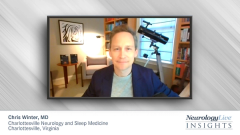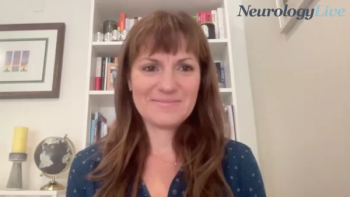
Narcolepsy: Evaluating and Addressing Excessive Daytime Sleepiness
Insight on the proper evaluation of excessive daytime sleepiness in patients with narcolepsy, as well as agents that have been used to manage this condition.
Episodes in this series

Transcript:
Chris Winter, MD:In terms of evaluating people with narcolepsy, we have lots of tools. I think the whole thing starts with an excellent clinical history. I need to talk to patients about their sleepiness. I’d love to talk to family members and friends about it as well because often their perspectives are very different than that of the individual. Once we get that clinical history and think we’re on the right path, trying to quantify that sleepiness is really what we want to do next. We do have some tools that allow us to do that. There’s the Epworth Sleepiness Scale, which is a very simple 8-question battery that allows us to put that individual in particular situations that they might commonly find themselves in, and we ask them “How likely are you to fall asleep in that situation?” With that number, we can get a very good sense of how driven that person is to sleep, understanding that a high drive to sleep is either coming from inadequate sleep, somebody who stays up too late or gets up too early, or dysfunctional sleep. What you often find with patients who have narcolepsy is that the opportunity for sleep is tremendous. They’re sleeping a ton of hours. It’s not a sleep quantity issue, but rather they’re sleeping a lot of hours, but still have a tremendously abnormal drive to sleep.
The Swiss Narcolepsy Scale is a bit newer scale, and it focuses more on that element of cataplexy in that diagnosis. The scoring’s a little bit different, but when you get that score, it has a very strong relationship to the presence or absence of narcolepsy, and again, relies a little bit more on those symptoms of cataplexy. We also do sleep studies for patients that often involve an evaluation in the sleep laboratory overnight, as well as what we call a multiple sleep latency test, or an MSLT, the next day that helps to quantify how driven a person is to sleep when given the opportunity. Thus, it takes that description or that complaint of sleepiness and makes it a bit more objective with the overnight study, making sure that there isn’t another cause for that individual to be excessively sleepy.
We are very fortunate to have very good therapeutic options for patients with narcolepsy, and not only good therapeutic options, but a wide array of them that really act on various neurotransmitters that are related to wakefulness in the brain. It’s not just all one-note variations. These are very different medications that can be used either in isolation with the patient or in combination. The medications we typically think about with narcolepsy are the traditional stimulants, and a lot of people have heard of those things, like Ritalin or methylphenidate, Adderall. The stimulants we’ve used for many years are probably not the first-line therapies they once were, but still play a valuable role in the lives of some patients with narcolepsy. Newer agents include modafinil, Provigil, or armodafinil, Nuvigil. These medications are more wake-promoting agents that allow individuals who are sleepy to feel more awake, have fewer adverse effects for most patients, are very well tolerated, and can be real lifesavers for patients who have the disorder. These are drugs that are typically taken when you wake up in the morning.
We have some newer therapeutics, such as sodium oxybate, which is actually a very old drug, but as a formulated medical treatment for patients with narcolepsy, it is a relatively newer option. These are drugs that individuals will take when they go to bed at night that allow changes to happen so that the individual awakens and feels more awake. These were the first drugs that were FDA approved for cataplexy. Thus, for those individuals who struggle a lot with falling asleep or having that sort of muscle paralysis during the day, these medications can offer a significant benefit to those people as well.
Transcript edited for clarity.
Newsletter
Keep your finger on the pulse of neurology—subscribe to NeurologyLive for expert interviews, new data, and breakthrough treatment updates.




















